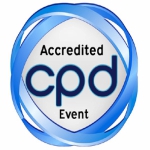
Daniel Cohen
Pharnext , France
Title: Network pharmacology based repurposed drugs combination for Orphan Diseases Treatment
Biography
Biography: Daniel Cohen
Abstract
Charcot-Marie-Tooth type 1a is an orphan genetic progressive de/dysmyelinating peripheral neuropathy affecting 125 000 persons across US and Europe. Disease, although clinically heterogeneous, impairs and quite often badly disables life of patients who could be wheelchair bound. It is primarily due to Schwann cells PMP22 protein overexpression from gene duplication. PXT 3003 , a low dose combination of 3 drugs including Baclofen, naltrexone and sorbitol, each already approved for other indications, was designed from network pharmacology based screening. Preclinical experiments showed ability to lower of PMP 22 expression, to re-myelinate axons and to improve histological, electrophysiological and clinical endpoints in the CMT1A PMP22 transgenic rat model overexpressing PMP22 protein. An exploratory double blind placebo controlled multicenter phase 2 was conducted on 80 mild to moderate adult patients over one year testing 3 different doses of the combination at a given ratio against Placebo. Anticipated safety was confirmed. Eleven endpoints were analyzed, 2 widely used clinical composite Scores such as ONLS (disability) and CMTNS (impairment), and 9 clinical and electrical quantitative measures. The most significant response was obtained with the clinical scores and some relevant electrical measures with a clear global dose effect. Milder patients responded better. Under the highest dose, which was still a 1/10 of usual dose of these drugs, disease state was stabilized in half of the patients when, beyond stabilization, it was improved in the other half of patients. These encouraging results led us to design a pivotal phase 3 to start end of 2015 on 300 mild to moderate adult patients across US and Europe, with ONLS as a primary clinical efficacy endpoint. Highly encouraging preliminary data obtained at the Max Planck Institute in post-natal CMT1A young RAT has also paved the way towards a pediatric trial hoping to prevent symptoms when treating young children early enough. Network pharmacology based strategy can be systematically applied to any rare or common disorders.

